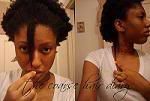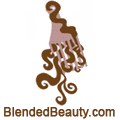There are many types of hair conditioner ingredients, which help the hair:
Moisturizers, whose role is to hold moisture in the hair. Usually these contain high proportions of humectants.
Reconstructors, usually containing hydrolyzed protein. Their role is to penetrate the hair and strengthen its structure through polymer crosslinking.
Acidifiers, acidity regulators which maintain the conditioner's pH at about 2.5–3.5. In contact with acidic environment, the hair's somewhat scaly surface tightens up, as the hydrogen bonds between the keratin molecules are strengthened.
Detanglers, which modify the hair surface by pH as acidifiers, and/or by coating it with polymers, as glossers.
Thermal protectors, usually heat-absorbing polymers, shielding the hair against excessive heat, caused by, e.g., blow-drying or curling irons or hot rollers.
Glossers, light-reflecting chemicals which bind to the hair surface. Usually polymers, usually silicones, e.g., dimethicone or cyclomethicone.
Oils (EFAs - essential fatty acids), which can help dry/porous hair become more soft and pliable. The scalp produces a natural oil called sebum. EFAs are the closest thing to natural sebum (sebum contains EFAs).
Lubricants, such as fatty alcohols, panthenol, dimethicone, etc.
Sequestrants, for better function in hard water.
(From Wikipedia)
Moisturizers, whose role is to hold moisture in the hair. Usually these contain high proportions of humectants.
Reconstructors, usually containing hydrolyzed protein. Their role is to penetrate the hair and strengthen its structure through polymer crosslinking.
Acidifiers, acidity regulators which maintain the conditioner's pH at about 2.5–3.5. In contact with acidic environment, the hair's somewhat scaly surface tightens up, as the hydrogen bonds between the keratin molecules are strengthened.
Detanglers, which modify the hair surface by pH as acidifiers, and/or by coating it with polymers, as glossers.
Thermal protectors, usually heat-absorbing polymers, shielding the hair against excessive heat, caused by, e.g., blow-drying or curling irons or hot rollers.
Glossers, light-reflecting chemicals which bind to the hair surface. Usually polymers, usually silicones, e.g., dimethicone or cyclomethicone.
Oils (EFAs - essential fatty acids), which can help dry/porous hair become more soft and pliable. The scalp produces a natural oil called sebum. EFAs are the closest thing to natural sebum (sebum contains EFAs).
Lubricants, such as fatty alcohols, panthenol, dimethicone, etc.
Sequestrants, for better function in hard water.
(From Wikipedia)









 Product Name: Oyin Handmade Greg Juice
Product Name: Oyin Handmade Greg Juice













0 comments
Post a Comment